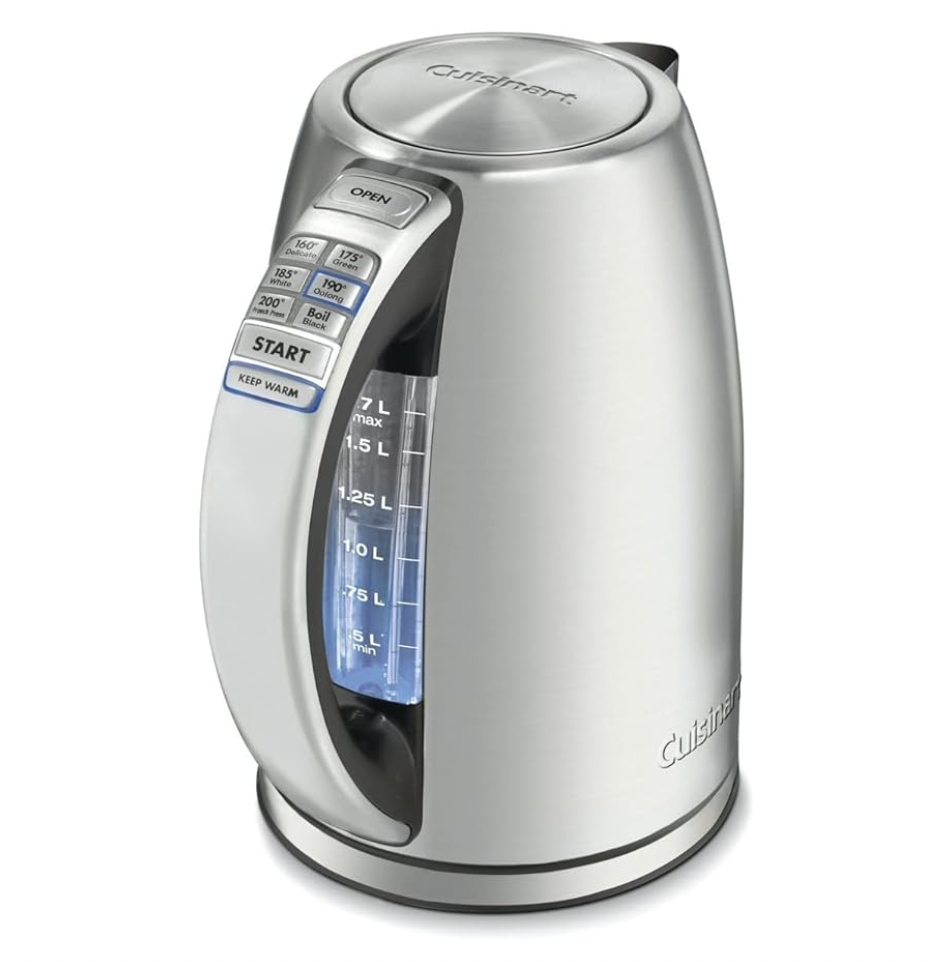New Medicare Changes Mean Surprising Savings
Category: Medicare
February 7, 2024 — The Inflation Reduction Act signed by President Biden in 2022 is bringing major new benefits to millions of Medicare recipients. But the sad fact is many of them aren’t aware of the surprising savings these new Medicare changes will bring. Asked if they had heard about 3 provisions in the law that affected Medicare in a KFF survey of people over 65, 44% knew that there is now a $35/month cap on insulin. But only 25% understood that the new law limits out of pocket prescription drug costs for Medicare Part D enrollees. And only 8% knew the least understood provision of the Act, that drug companies could be penalized for increasing prices to Medicare faster than inflation.
Prior to this law people on Medicare who need to take expensive prescription drugs could face enormous out of pocket costs, some even paying $10,000 or more per year. Many people also found themselves in the confusing Part D “donut hole”, where different co-insurance, co-pays, and maximums applied at certain levels. Starting in 2024 there will be no more donut holes, thanks to this new legislation.
The Inflation Reduction Act’s Medicare changes mean surprising savings for people in Part D programs
Maximum out of pocket prescription drug costs capped at $3300 in 2024
Maximum out of pocket limited to $2000 starting in 2025
Insulin costs cannot exceed $35/month.
Vaccines under Part D are now free (some shingles vaccines were upwards of $70)
Drug companies cannot increase prices to Medicare more than the cost of inflation
Annual increases in Part D premiums are limited through 2030
A subsidy called Extra Help will aid Medicare recipients with low incomes with their Part D premiums and deductibles.

The Biggest Medicare Savings
Although all of these changes are positive for people on Medicare’s Part D, by far the most impactful are the new limits on out of pocket costs for prescription drugs. For example, this year people with Part D coverage have maximum prescription drug out of pocket costs of $3,300. In 2025 maximum out of pocket drug costs are further reduced to $2,000. Previous to the new law, some people on Medicare faced bills for tens of thousands of dollars for their drugs, or they sometimes opted not to take them because of the cost. Another saving is that those covered under Part D do not have to pay 5 percent of the cost of brand-name drugs once their drug expenditures reach certain levels.

Vaccines are now free, and insulin costs capped at $35/month. Medicare can now negotiate drug prices for 10 drugs, including the expensive blood thinners Eliquis and Xarelto, which now can cost hundreds of dollars per month, even with Part D coverage. Some expensive diabetes drugs will also see negotiated prices. The drug companies are not happy about it, but so far appear to be going along with it.
Bottom line
Some experts have called these new Medicare changes the most important developments in the history of the program. They will take away the fear that an illness requiring expensive drugs will drive some people into bankruptcy, and reduce excessive out of pocket drug costs for millions more. Medicare Part D premiums rose more than normal in 2024 to help fund these benefits.
For further reading:
New York Times: If You’re on Medicare, You Could Save Money on Drugs This Year
(free link)
Medicare Will Negotiate Prices on 10 Expensive Drugs
Comments? Have you seen an impact from these new cost savings, perhaps on your insulin expenditures? It might be well into the year before most people see their out of pocket Part D costs reach the cap. Please share your thoughts in the Comments section below.






Comments on "New Medicare Changes Mean Surprising Savings"
Admin says:
These are some welcome changes. I am on Eliquis and the copay after the Part D insurance was unbelievable, probably $1500/year. Negotiating prices on drugs like those only makes sense, why should the US pay more than any other country for the same drugs. I ended up enrolling with the VA and now get Eliquis and some other drugs for less than $100 a quarter. I bet the folks who need super-expensive drugs are breathing a sigh of relief.
Mike says:
It's important to remember that negotiated prices don't go into effect until January 1, 2026 and a lot could change by then. There are several lawsuits going on to stop the negotiations, the makeup of Congress could change (the IRA was passed on a partisan basis, not a single member of the then minority party voted for the program) while a group called Project 2025, which is planning on a different President next year, is calling for the repeal of negotiations and the 1851 lobbyists who spent over $341 million representing the pharmaceutical industry 2023 are doling out cash to end the IRA.
While the pharmaceutical industry thinks the government shouldn't be negotiating prices they do think the government should pay for the research that produces the drugs that they profit from. The taxpayer paid $11.7 billion for research on the 10 drugs eligible for price negotiations. In 2022 pharmaceutical companies pocketed $70 billion selling those 10 drugs.
The $11.7 billion is just the tip of the iceberg, other subsidies include tax credits/rebates, property tax abatements, grants and grant/loan hybrids, loan or bond financing ,enterprise zones, tax increment financing, training reimbursement, cost reimbursement, infrastructure assistance, industrial revenue bonds, tax rebate/credit and grant hybrids and venture capital. Pfizer, the largest drug company with over $100 million in revenues has received 360 such subsidies, the top 5 alone worth $222 million. Pfizer has also been cited for 98 violations that include defrauding the government, unapproved promotion of medical products, kickbacks and bribery, price-fixing or anti-competitive practices, drug or medical equipment safety violations.
Stevo says:
The cost of drugs is only half of the problem. We need to change the medical field's mindset from using drugs to treat diseases to doing things to prevent them from happening in the first place. I wouldn't mind my tax money going to develop these drugs if we had a "not-for-profit" medical industry. That will never happen as long as politicians are paid to enact policy that caters to corporate greed.
Mike says:
From Medicare on cost and number of people using the drugs that will be negotiated:
"For the time period between June 1, 2022 and May 31, 2023, which is the time period used to determine which drugs were eligible for negotiation, about 8,247,000 people with Medicare Part D coverage used these drugs to treat a variety of conditions, such as cardio-vascular disease, diabetes, autoimmune diseases, and cancer. These selected drugs accounted for $50.5 billion in total Part D gross covered prescription drug costs, or about 20% of total Part D gross covered prescription drug costs during that time period."
Only 10 drugs cost $50.5 billion in one year! No wonder pharma is fighting negotiations.
The IRA is expected to save Medicare/taxpayers $287 billion by 2031.
Mike says:
The pharmaceutical industry has spent $1.5 million since the IRA was passed to influence lawmakers and it seems to be working. Democratic Reps. Scott Peters (Calif.), Wiley Nickel (N.C.), Josh Gottheimer (N.J.) and Donald Davis (N.C.) who supported the IRA are now cosponsors of bills that would limit Medicare ability to negotiate drug prices. The four Democrats have together received $300,000 from the pharmaceutical and health products industry for the 2023-2024 congressional session.
Mike says:
Recent Medicare announcement about the IRA: " In 2023, 10.3 million Medicare Part D enrollees received a recommended vaccine free of charge, which saved enrollees more than $400 million in out-of-pocket costs."
February 1, 2025 Medicare will announce the next 15 drugs chosen for price negotiation.
Marilyn A. Spivey says:
I am 77 years old. I go to a naturopathic doctor. I take no pharmaceutical drugs of any kind and I probably never will. Intermittent fasting (only eating from 10 am-6 pm), working out in the gym, hiking with my dog and eating organic. I also have whole house air and water filtration and all organic bedding, including mattress and personal care and cleaning products. Purity in this ever-challenging environment.
Mike says:
A recent poll of voters over the age of 65 about provisions in the IRA found:
15% know drug companies can be penalized for raising prices faster that the rate of inflation.
40% know there is an annual out of pocket limit for drugs costs for people with Medicare.
48% know Medicare is negotiating drug prices.
52% know Medicare caps the price of insulin at $35.
The poll also found 20% of adults over age 65,including 17% with some type of prescription coverage, have problems affording their medications. 78% think drug prices are unreasonable.
My take- nearly 8 in10 of people taking the poll think prices are too high,1 in 5 people have trouble paying for RXs but yet so few are aware of a nearly 2 year old law that address their concerns.
Clyde says:
Although I’ve generally advocated for some Medicare Advantage plans (PPOs with sizable provider networks and lower annual maximum out of pocket costs) drawback is that it’s difficult to switch from Medicare Advantage to Medicare supplement, except for the four states where it’s allowed. Hopefully, those in charge will start to consider changing policy in order to allow switching from Advantage to Supplement.
Mike says:
Over the past few months the pharmaceutical industry trade group PhRMA, drug companies AstraZeneca, Bristol Meyers Squibb, Janssen Pharmaceuticals and the U.S. Chamber of Commerce have lost cases challenging Medicare’s program to negotiate prices.
Jennifer says:
The problem for Part D is that while the drugs are decreasing in price, the Part D premiums and deductibles will be going way up for 2025. Many will bump certain drugs into a higher tier so the patient has to pay more. This should be addressed with the proper authorities.
Mike says:
Key points from an analysis about premiums and the IRA by KFF, and independent health policy research organization:
Changes to the Part D benefit in the Inflation Reduction Act will mean lower out-of-pocket costs for Part D enrollees but higher costs for Part D plans overall, leading to concerns about possible premium increases.
CMS is taking steps to mitigate potential premium increases through a new demonstration program for stand-alone drug plans, as well as payment changes designed to bring greater stability to the Part D market in 2025.
The Inflation Reduction Act includes a provision to cap growth in the base beneficiary premium to 6%. For 2025, the base premium is $36.78, an increase of $2.08 or 6% over the 2024 base premium. Although this 6% cap doesn’t apply to the individual premiums that plans charge, it does help to limit premium increases.
Actual Part D plan premiums for 2025 are not yet known and will be announced in September, but premiums are expected to vary, with lower monthly premiums for Medicare Advantage drug plans than stand-alone drug plans, on average, as in 2024. The annual open enrollment period, which runs from October 15 to December 7, presents an opportunity for Part D enrollees to compare plans and shop for lower-priced coverage that meets their needs.
Mike says:
Authorities are looking at the influence of Pharmacy Benefit Managers. PBMs negotiate the price and access to American’s medications.
The Federal Trade Commission is planning on suing the three largest PBMs, UnitedHealth Group’s Optum Rx, CVS Health’s Caremark and Cigna’s Express Scripts, which are all owned by or connected to health insurers. These three PBMs manage almost 80% of the prescriptions in the US and the six largest PBMs control 90% of prescriptions.
The Federal Trade Commission says “these powerful middlemen may be profiting by inflating drug costs and squeezing Main Street pharmacies.” and “ they wield enormous power and influence over patients’ access to drugs and the prices they pay.” and “This can have dire consequences for Americans, with nearly three in ten surveyed Americans reporting rationing or even skipping doses of their prescribed medicines due to high costs.” The report asserts “PBMs hold substantial influence over independent pharmacies by imposing unfair, arbitrary, and harmful contractual terms that can impact independent pharmacies’ ability to stay in business and serve their communities.”
There is bipartisan support in Congress to deal with PBMs. A bill was just introduced in the House that would crack down on how PBMs operate. The Pharmaceutical/Health products industry spent $384million on lobbying in 2023.
Marilyn A. Spivey says:
Pharmaceutical drugs prescribed without knowing the cause of the problem is rampant in our society. The side effects of almost all can be horrendous. I hope to never need any of it!
Mike says:
An announcement today from Medicare on the cost savings the IRA is expected to produce:
"If the new prices had been in effect last year, Medicare would have saved an estimated $6 billion, or approximately 22 percent, across the 10 selected drugs. These negotiated prices range from 38 to 79 percent discounts off of list prices. About nine million people with Medicare use at least one of the 10 drugs selected for negotiation. People with Medicare prescription drug coverage are expected to see aggregated estimated savings of $1.5 billion in their personal out-of-pocket costs in 2026.
"The selected drugs accounted for $56.2 billion in total Medicare spending, or about 20 percent of total Part D gross spending in 2023. Overall, total Part D gross spending for the 10 selected drugs more than doubled from 2018 to 2022, from about $20 billion to about $46 billion, an increase of 134 percent. Medicare enrollees paid a total of $3.4 billion in out-of-pocket costs in 2022 for these drugs."
Admin says:
This is a great, long overdue law. It will save billions. Bravo Biden administration.
Mike says:
The list of drugs with new negotiated price first and the price before negotiation second.
Eliquis $231, down from $521
Xarelto $197, down from $517
Januvia $113, down from $527
Jardiance $197, down from $573
Enbrel $2,355, down from $7,106
Imbruvica $9,319, down from $14,934
Farxiga, $178, down from $556
Entresto $295, down from $628
Stelara $4,695, down from $13,836
Fiasp and NovoLog $119, down from $495
As I said in a previous post it’s important to remember that negotiated prices don't go into effect until January 1, 2026 and a lot could change by then. There are several lawsuits going on to stop the negotiations, the makeup of Congress could change (the IRA was passed on a partisan basis, not a single member of the then minority party voted for the program) while a group called Project 2025, which is planning on a different President next year, is calling for the repeal of negotiations and the 1851 lobbyists who spent over $341 million representing the pharmaceutical industry in 2023 are doling out cash to end the IRA.
Mike says:
I left out that those prices are for a 30 day supply.
RAF says:
Will there be savings for the less expensive pharmaceuticals? Such as antibiotics, pain killers, antidepressants, etc.?
Clyde says:
For RAF - The recently-announced cap on drugs for Medicare recipients covers only those ten expensive drugs listed. Antibiotics, pain killers and antidepressants, etc., are currently covered by Medicare Part D and are in most cases very inexpensive, sometimes with a zero prescription cost.
Mike says:
Those are the covered drugs for 2026 and represent about 20% of Part D spending in 2023. By February 1, 2025 Medicare will announce up to15 drugs selected for negotiations in 2027, up to 15 more in 2028 and up to 20 more each year after that.
The list price on the first drugs negotiated increased by as much as 55% between 2018 and 2023. Part D spending on those drugs increased 134% from 2018 to 2022.
The IRA as already capped the price of covered insulin products at $35 month, provided free recommended vaccines and expanded eligibility for help with prescription costs, premiums and copays. In 2025 there will be a cap of $2000 on out of pocket expenses.
Mike says:
From a report by Protect Our Care:
?In the first three months of 2024 the first ten drugs selected for price negotiations brought in $16.5 billion in revenues and the companies that manufacture the drugs had $25.4 billion in profits. Those companies spent almost $26 billion in stock buybacks and dividends. The industry group PhRMA spent 20% more on lobbying in the first quarter of 2024 compared to same period in 2023.
Despite the industry claims that the IRA would reduce incentives to bring new drugs to market they spent 16.6% more on research and development in the year after the IRA became law. Two companies spent more on rewarding shareholders than they did on research and development.
Drug companies could lose $1 trillion in revenue over the next decade and still be the most profitable industry. The 15 largest drug companies had almost $173 billion in revenue and $29 billion in profits in the first three months of 2024.
in 2023 the seven drug companies that have sued to stop Medicare from negotiating prices reported $343 billion in revenue and $53 billion in stock buybacks and dividends.
Search “greedwatch protect our care” for the report.
Mike says:
While not a part of the IRA it is another attempt to lower drug costs. Everything that follows is copied directly from the Medicare announcement of October 9:
Today, the U.S. Department of Health and Human Services (HHS), through the Centers for Medicare & Medicaid Services (CMS), released a Request for Information (RFI) and a sample list of prescription drugs that the agency preliminarily intends to include under the proposed Medicare $2 Drug List Model, which was developed in accordance with President Biden’s Executive Order 14087, “Lowering Prescription Drug Costs for Americans."
Under the model, people enrolled in a participating Medicare prescription drug coverage (Part D) plan would have access to these drugs for a low, fixed copayment of no more than $2 for a month’s supply per drug. The model would provide individuals more certainty about the out-of-pocket costs for these generic covered Part D drugs that treat common medical conditions. CMS issued this RFI to support continued development of the model.
The Center for Medicare and Medicaid Innovation’s (Innovation Center's) Medicare $2 Drug List Model aims to test whether a simplified approach to offering low-cost, clinically important generic drugs can:
Improve medication adherence,
Lead to better health outcomes, and
Improve satisfaction with the Part D prescription drug benefit among people with Medicare and prescribers.
Participation in the model would be voluntary for Part D sponsors and, pending further development, could start as early as January 2027.
Details on the Medicare $2 Drug List Request for Information can be found at Medicare $2 Drug List webpage. Additional details on the Medicare $2 Drug List Model were also released in October 2023 in the “CMS Innovation Center’s One-Year Update on the Executive Order to Lower Prescription Drug Costs for Americans” blog post.
Mike says:
Last week a New Jersey judge threw out the lawsuit filed by pharmaceutical company Novartis against the Medicare drug price negotiation program. It is the eighth suit companies have lost.
Mike says:
Medicare announced cost savings from the IRA for the first 6 months of 2024: "Today , the Department of Health and Human Services (HHS), through the Office of Assistant Secretary for Planning and Evaluation (ASPE), released new data showing that nearly 1.5 million people with Medicare Part D saved nearly $1 billion in out-of-pocket prescription drugs costs in the first half of 2024 because of the Biden-Harris Administration’s Inflation Reduction Act. Thanks to the Inflation Reduction Act, some people with high drug costs have their out-of-pocket drug costs capped at around $3,500 in 2024. Next year that cap lowers to $2,000 for everyone with Medicare Part D. The report shows that if the $2,000 cap had been in effect this year, 4.6 million enrollees would have hit the cap by June 30 and would not have to pay any more out-of-pocket costs for the rest of the year."
A study by Journals of the American Medical Association found cancer patients saved $7000 due to the cap on out of pocket cap.
Mike says:
After the election results I expect this plan will be terminated early next year.
Toni says:
The Inflation Reduction Act is turning out to be a costly mistake for most of us on Part D drug plans. When I entered all my medicines in Medicare it came up with 23 plans for my zip code BUT only three (3) plans next year will cover the one most expensive drug I take. That situation has never happened to me before and I've been on Medicare for 12 years. My current plan still covers it but the cost has gone up considerably. I just read an article on the IRA and here are some quotes: "Some Medicare patients will pay more for medicines. Others may not be able to get their medicines.89% of insurers and PBMs say they plan to reduce access to medicines in Medicare Part D because of the Inflation Reduction Act. Higher costs and less access. That’s not what seniors were promised.
Beebs says:
I agree with Mike. The plan will definitely be terminated next year.
Patricia Reynolds says:
I found a plan for next year that will be less expensive in cost and cover everything with much less expense to me annually. (I worry about) my savings...and social security. I do have a plan B to relocate to Portugal or Mexico or Panama. I almost moved internationally when I first retired and need to do so if benefits are cut. I can live well any of those places if needed.
Mike says:
I think Toni’s experience in contrast to 1.5 million seniors that saved nearly a billion dollars in just six months from the IRA is just another indicator of our disastrous healthcare system.
Mike says:
My plan has become cheaper the last 3 years. The premium has dropped to $0, most generics are free or inexpensive but the deductible has risen. The crazy part is the cost of my 18 choices run from $37 a year to $5,700 a year. How is such a spread possible?
I think it’s important to know that while the drug companies cry about the provisions of the IRA they receive on average a $1,417 per enrollee subsidy from Medicare and receive additional risk adjusted payments based on the health status of enrollees. I have not read anything about how the risk adjustment payments work but Advantage plans use that ploy to increase the amount they get from Medicare. I would be naive to think the drug companies aren’t doing the same.
Marilyn A. Spivey says:
A real problem with pharmaceutical drugs as they are often prescribed without getting to the root of the problem. Many of them are designed to manage symptoms, not eliminate the root cause.
Jennifer says:
I quite agree with Marilyn. As a former surgery nurse, I have chosen the Naturopathic way whenever possible. The side effects of many prescription drugs are worse than the diseases they proclaim to improve. I was prescribed a costly medication and per the former Chief of Surgery at my hospital, I was urged to order it from Canada. I was shocked that he was doing the same thing!
Ruth Woodcock says:
Marilyn, what is even worse is that a number of these Rx are prescribed to treat side effects of the drugs we are already taking. There is little if any discussion of why you're taking the original drug, substitutes, or alternatives.
Mike says:
Comparison of Medicare negotiated drug prices and average drug prices in peer nations per 30-day supply, U.S. dollars, 2024. The first number is what the Medicare negotiated price will be in 2026(IF the program continues), the second number is what the average is today in Australia, Austria, Belgium, Canada, France, Germany, Japan, Netherlands, Sweden, Switzerland, and the United Kingdom. The percentage figure is the Medicare price percent above average in comparable countries.
Jardience $204 $52 289%
Farxiga $182 $54 236%
Eliquis $249 $76 228%
Enbrel $2,335 $734 218%
Januvia $117 $39 204%
NovoLog/Fiasp $134 $50 169%
Xarelto $206 $82 153%
Entresto $314 $139 125%
Imbruvica $10,619 $5,670 87%
Stelera $4,490 $2,822 59%
Mike says:
The cap on out of pocket expenses lowered to $2000 January 1.
Admin says:
Thanks Mike. This is an important part of the Biden legacy, secured by VP Harris breaking the tie. Millions of people are going to find this helpful.
Mike says:
Admin, the IRA was not passed with bipartisan support. Every Republican in Congress sided with the pharamcutical industry and against America's senior citizens by voting against the IRA. In the Senate the vote was 51-50, with VP Harris breaking the tie. In the House the vote was 220-207 in favor.
The president elect's cabinet appointees have a reported worth of nearly $12 billion, add in the 2 men running the DOGE commission and the total jumps to $460 billion. Admin's comment about billionaires is simply pointing out the obvious and will be a factor in every policy decision.
Admin Comment: Thanks for the correction Mike. I should have looked more closely at that vote. Frankly, I am not sure why anyone except for big pharma could be in favor of rolling back to higher out of pocket drug costs, but maybe some citizens enjoy paying them.
Debra says:
Mike thanks for posting correct information on the IRA
Vote.
Daryl says:
I think Mike did a spectacular job of spelling out the benefits of the current plan. What’s in store after 2024? Anybody hear anything?
Admin says:
This discussion has been really interesting, but it is getting too heated too continue. Comments are closed. Thanks to everyone for your thoughts.